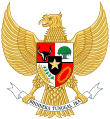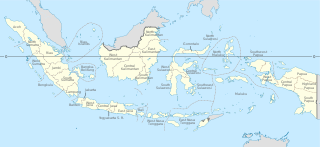
Provinces are the first-level administrative divisions of Indonesia. It is formerly called the first-level provincial region before the Reform era. Provinces have a local government, consisting of a governor and a regional legislative body. The governor and members of local representative bodies are elected by popular vote for five-year terms, but governors can only serve for two terms. Provincial governments have the authority to regulate and manage their own government affairs, subject to the limits of the central government.
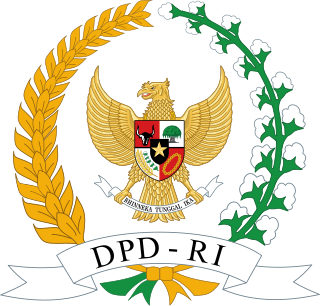
The Regional Representative Council, is one of two parliamentary chambers in Indonesia. Together with the House of Representatives (DPR), it makes up the Indonesian national legislative body, the Majelis Permusyawaratan Rakyat (MPR). Under Indonesia's constitution, the authority of the DPD is limited to areas related to regional governments and can only propose and give advice on bills to the DPR. Unlike the DPR, the DPD has no direct law-making power. Its members are usually called senators instead of DPD members.
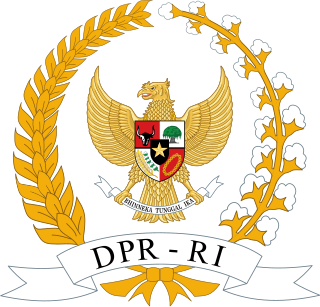
The House of Representatives of the Republic of Indonesia is one of two elected chambers of the People's Consultative Assembly (MPR), the national legislature of Indonesia. It is considered the lower house, while the Regional Representative Council (DPD) serve as the upper house; while the Indonesian constitution does not explicitly mention the divide, the DPR enjoys more power, privilege, and prestige compared to the DPD.
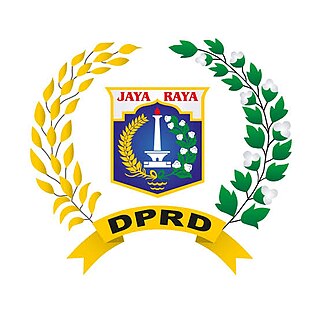
The Special Region of Jakarta Regional House of Representatives is the unicameral legislature of the Indonesian province of Jakarta. The Council is composed of 106 members elected via party lists in the 2014 legislative election. Elections are held every five years and are conducted simultaneously with the nationwide legislative election.

General elections were held in Indonesia on 17 April 2019. For the first time in the country's history, the president, the vice president, members of the People's Consultative Assembly (MPR), and members of local legislative bodies were elected on the same day with over 190 million eligible voters. Sixteen parties participated in the elections nationally, including four new parties.

The Indonesian Solidarity Party is a political party in Indonesia that focuses on women's rights, pluralism, and Indonesian youth. It is led by Kaesang Pangarep who is the youngest son of President Joko Widodo. He joined the party on 23 September 2023 and became the general chairman on 25 September 2023.

The Indonesian Unity Party, Perindo is a political party in Indonesia. The party was founded on 8 October 2014 and declared on 7 February 2015 by media tycoon Hary Tanoesoedibjo, owner of the MNC Group and business partner of former US President Donald Trump.

Local elections were held in Indonesia on 15 February 2017, with a single run-off for Jakarta on 19 April 2017. The series of elections was the second time local elections were held simultaneously across the country after the 2015 local elections. In total, the election contested 7 gubernatorial, 18 mayoral and 76 regent seats with 41 million eligible voters and 337 candidate pairs.

The West Java Regional House of Representatives is the unicameral legislature of the Indonesian province of West Java.
The Indonesian electoral law of 2017, also known in Indonesia as Undang-Undang Pemilu, is the law regulating elections in Indonesia. Officially, it is known as the Law Number 7 of 2017. The law was passed in July 2017 following nine months of debate in the People's Representative Council.

General elections were held in Indonesia on 14 February 2024 to elect the president, vice president, People's Consultative Assembly (MPR) which consists of the House of Representatives (DPR), the Regional Representative Council (DPD), and members of local legislative bodies (DPRD) at the provincial and city/regency levels. The newly elected members of the MPR will be sworn in on 1 October 2024, while the elected president and vice president will be sworn in on 20 October 2024. Incumbent President Joko Widodo was ineligible to run for a third term due to limitations established by the Indonesian constitution. The election has over 200 million eligible voters, voting in over 800,000 polling stations across the country on the same date.
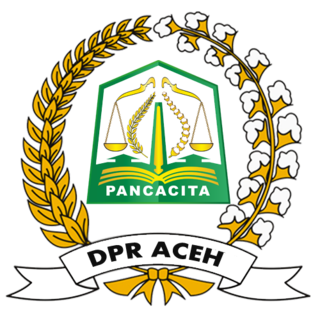
The Aceh House of Representatives is the devolved unicameral legislature of the Indonesian province of Aceh. Unlike other regional legislatures in Indonesia in general, it has unique characteristics according to the 2005 Aceh Government Act c. 11; such as the authority to name itself, the ability to determine the numbner of members, and the inclusion of Aceh regional parties. The council meets in Aceh's capital city of Banda Aceh.
The Malang City Regional House of Representatives is the unicameral municipal legislature of the city of Malang, East Java, Indonesia. It has 45 members, who are elected every five years, simultaneously with the national legislative election.
The People's Consultative Assembly, the bicameral legislature of Indonesia, passed a series of resolutions of the People's Consultative Assembly or TAP MPR throughout the 1960s, to the very last issued in 2003.

North Kalimantan is an electoral district in Indonesia. The electoral district encompasses of North Kalimantan at large.
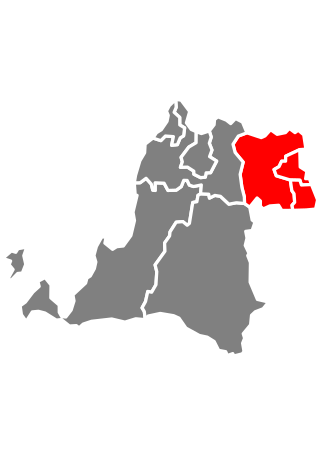
Banten III is an electoral district in Indonesia which encompasses the cities of Tangerang and South Tangerang, along with Tangerang Regency. It currently sends 10 members to the People's Representative Council.
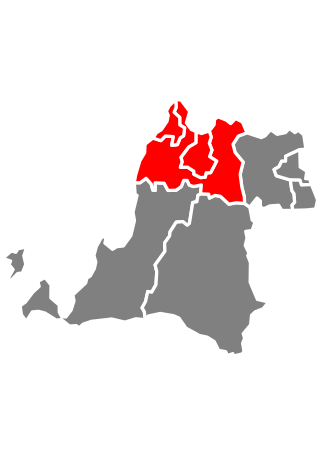
Banten II is an electoral district in Indonesia which encompasses the cities of Serang and Cilegon, along with Serang Regency. It currently sends six members to the People's Representative Council.

The Bandung City Regional House of Representatives is the unicameral municipal legislature of the city of Bandung, West Java, Indonesia. It has 50 members, who are elected every five years, simultaneously with the national legislative election.

The Medan City Regional House of Representatives is the unicameral municipal legislature of the city of Medan, North Sumatra, Indonesia. It has 50 members, who are elected every five years, simultaneously with the national legislative election.

